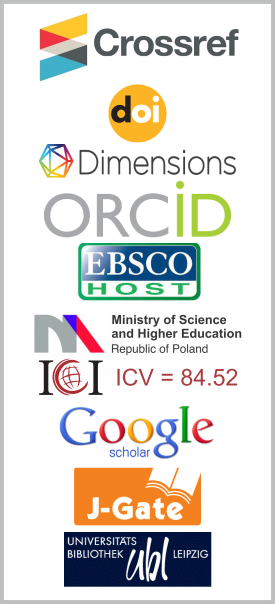Insights Into the Lucas \(Q\)-Matrix and Its Properties
DOI:
https://doi.org/10.26713/jims.v17i1.3023Abstract
This work proves that the equality
\begin{align*}
\begin{bmatrix} 3 & 1 \\ 1 & 2 \end{bmatrix}^n =
\begin{cases}
5^{\frac{n}{2}}\begin{bmatrix}
F_{n+1} & F_n \\
F_n & F_{n-1}
\end{bmatrix}, & \text{if } n \text{ is even},\\
5^{\frac{n-1}{2}}\begin{bmatrix}
L_{n+1} & L_n \\
L_n & L_{n-1}
\end{bmatrix}, & \text{if } n \text{ is odd},
\end{cases}
\end{align*}
holds for all integer \( n \), where \( \begin{bmatrix} 3 & 1 \\ 1 & 2 \end{bmatrix} \) is the Lucas \( Q \)-matrix introduced by Köken and Bozkurt [2]. While these authors established the case for natural \(n\) using induction, extending the result to integer exponents is considerably more challenging. One cannot simply assume that the formula holds for an arbitrary integer \(n\), since, although Fibonacci and Lucas numbers are defined for negative indices, the proof by mathematical induction does not automatically extend to this setting. To achieve this, we developed several key prerequisites, including new relationships between the Fibonacci and Lucas \( Q \)-matrices, such as \(\begin{bmatrix}L_{n+1} & L_{n} \\ L_{n} & L_{n-1}\end{bmatrix}=\begin{bmatrix}3 & 1 \\ 1 & 2\end{bmatrix}\cdot\begin{bmatrix}F_{n} & F_{n-1} \\ F_{n-1} & F_{n-2}\end{bmatrix}=Q_L \cdot Q_F^{n-1}\), \(n \in \mathbb{Z}\). Additionally, we demonstrate several previously known properties, but in a different way, using our properties. Because this text is also a survey article, we adopted a didactic, step-by-step approach, minimizing omissions whenever possible.
Downloads
Downloads
Published
How to Cite
Issue
Section
License
Authors who publish with this journal agree to the following terms:- Authors retain copyright and grant the journal right of first publication with the work simultaneously licensed under a CCAL that allows others to share the work with an acknowledgement of the work's authorship and initial publication in this journal.
- Authors are able to enter into separate, additional contractual arrangements for the non-exclusive distribution of the journal's published version of the work (e.g., post it to an institutional repository or publish it in a book), with an acknowledgement of its initial publication in this journal.
- Authors are permitted and encouraged to post their work online (e.g., in institutional repositories or on their website) prior to and during the submission process, as it can lead to productive exchanges, as well as earlier and greater citation of published work.




